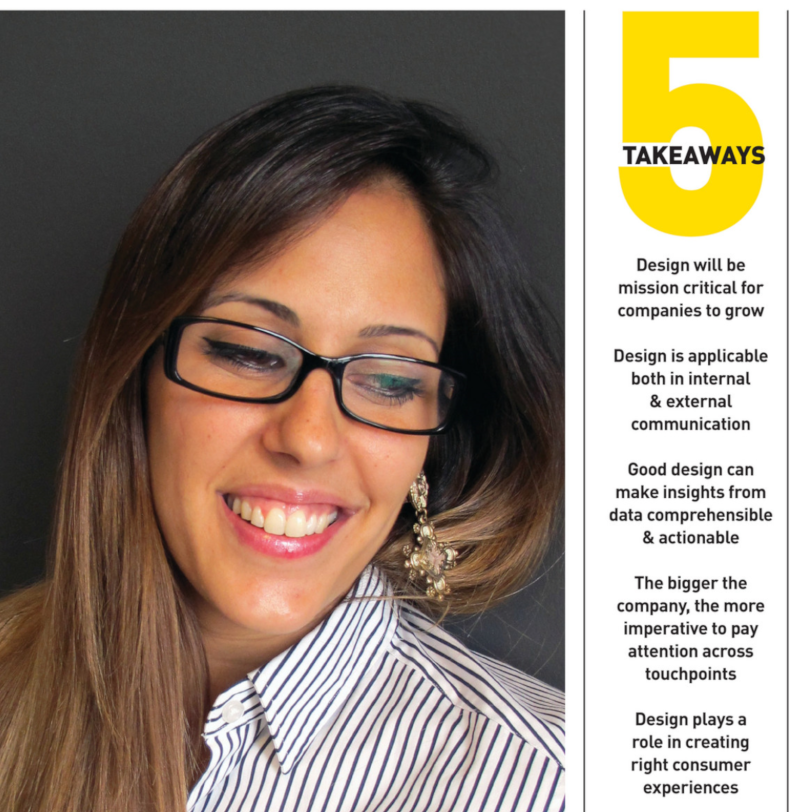 Even as she is fondly called the “infographic lady” by some in her client roster, presenting data and information in a manner that is easily understood drives Carla Saliba. “It does not matter if it is an internal document, a power-point presentation in a forum or a piece of communication meant for external stakeholders, every element of an organization together creates the overall brand image. For companies that are serious about being thought leaders, it is critical to realize this,” remarks the founder and CEO of infographic.ly.
Even as she is fondly called the “infographic lady” by some in her client roster, presenting data and information in a manner that is easily understood drives Carla Saliba. “It does not matter if it is an internal document, a power-point presentation in a forum or a piece of communication meant for external stakeholders, every element of an organization together creates the overall brand image. For companies that are serious about being thought leaders, it is critical to realize this,” remarks the founder and CEO of infographic.ly.
This attention to detail, perhaps due to her background in architecture, is second nature to Ms Saliba, and part of the reason why she ventured to set up infographic.ly. Despite its name, infographic.ly deals with a broad scope of information and data presentation via different formats including motion or video. Its client list includes government entities such as KHDA, consultancy firms, Ted speakers, as well as brands across the various industry verticals for both in-house and external audiences.
Like most entrepreneurs, Ms Saliba had first set out to address a need gap. As volume of data exploded, it became vital to present it in a manner that people understand. This did not just mean a designer but a skillset that sat at the cusp of content and design. “There were firms in other markets like US that were doing this, but no one in the Middle East. I recall attending seminars and seeing reports from some very big firms, wondering why they would present something that no one was going to understand,” she comments.
VOI: Value On Investment
In her journey since, Ms Saliba represents a small but growing core of ‘data designers’. This skill comes under spotlight now because companies have witnessed firsthand how reams of data can be wasted when not put to use.
“A good design makes all the difference. It is easy for companies, especially in times like these when everything is about return on investment (ROI), to not see the value of design. When it comes to design, the conversation broadens to the value on investment (VOI),” she points out.
VOI cannot be underestimated in the experience age. Brands such as Apple, also on infographic.ly’s client list for specific on-ground projects, are cases in point. Every small element of its presence with all its stakeholders is important to Apple. “Companies that are leading in their sectors are investing in how they present themselves. The image must connect back to the positioning. All elements, visual being a dominant part, must be consistent in communication and presentation,” Ms Saliba states.
From time immemorial, human beings have taken in information visually. This basic trait has not changed despite the growing complexities of the world. Paying attention to all aspects of design goes back to investing in the brand itself.
New Skillsets
In the pursuit of making data design accessible, while the first step is to intake, digest to identify important points, articulate and then add a creative layer to produce an effective visual, the second step is empowerment.
Ms Saliba also trains people in companies towards design-led thinking. She explains, “We don’t say this often enough –– speed matters. Companies must engage audiences faster on digital platforms or even respond to their clients quicker. It is hence important for them to house internal resources that are skilled in this aspect.”
A natural fallout of this has been honing a skillset for a new generation. As the likes of artificial intelligence and machine learning gain prominence, this skillset will become more valuable. This is because digesting data and information for a purposeful outcome shaves of inefficiencies at several levels.
Content is king in achieving this. “Design is strategic and begins with content and then goes beyond it. This is not something that graphic designers can do,” Ms Saliba points out.
Getting It Right
Ms Saliba acknowledges that even as the importance of design is widely discussed, not many companies in the region have embraced it.
“Being an entrepreneur, I understand the mindset,” Ms Saliba reflects. She elaborates that a good design may still be viewed as luxury versus necessity. People cannot differentiate a good design from bad unless they have seen the former, and observed the difference.
“There is quite a bit that needs to be done from an educational standpoint to help people understand what design brings to the table. Ultimately, a cheap design will cost more, because you’ll have to keep spending to get it right,” she cautions.
Her final advice is to begin by getting the basics right. Design is one function, where the devil is in the details and every small change can make a big difference.




